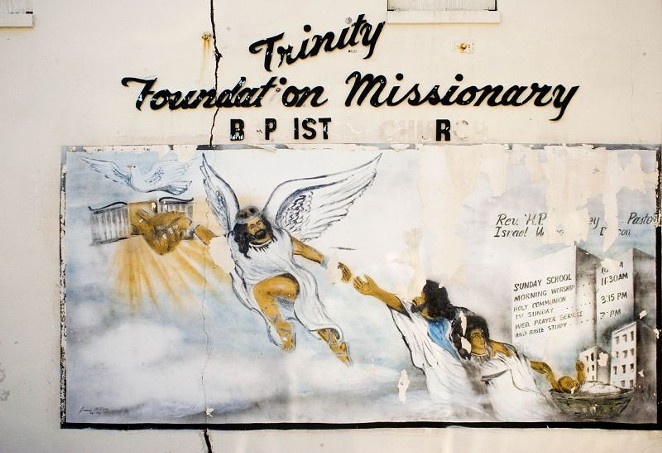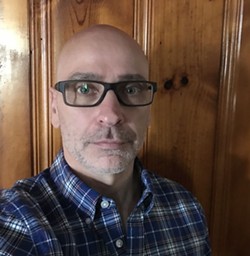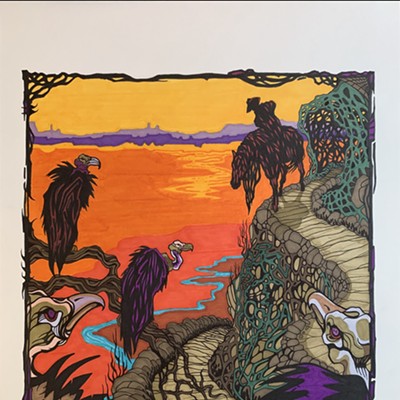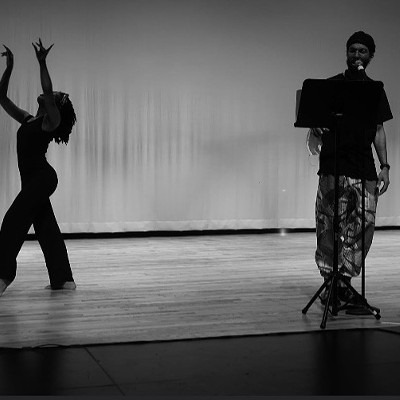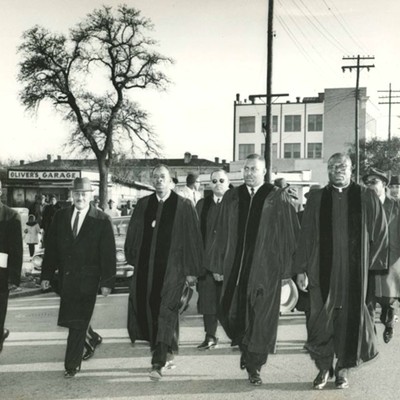WHEN Nicholas Wozniak graduated from SCAD in 1996, he symbolized, in a way, the end of film at the university. Digital became the preferred medium, and two decades later, we’re all photographers in our own right.
At the same time, Savannah underwent rapid development. The Broughton Street that Wozniak remembers was run-down, full of mom-and-pop shops with hand-painted signs.
As the city was developed further, the signs were painted over, and Wozniak took notice. He began photographing the signs in 2007, and that body of work is now on display at the Savannah Cultural Arts Center.
“Vanishing Identities,” the first exhibition at SCAC and the first solo exhibition for Wozniak, follows Savannah’s hand-painted signs and their gradual removal from the city’s cultural landscape.
We spoke with Wozniak last week about the switch from film to digital, how Savannah is changing rapidly, and what’s next.
1. How did you get started with this body of work?
There’s a building downtown, I want to say it’s on Price, and it had an old Coca-Cola sign sprayed on the back of a brick building. I photographed that, and that made me start looking at hand-painted signage. Then to compare that to the newer signs, where they have a laser cutter edge.
I started documenting it, and the first ones I did were in 2007. They’ve continued, because I’m finding them rarely now, but I’m still finding some here and there.
I went to SCAD from ’92 to ’96, so that’s when I first moved down here. I went away for a while down to Florida and I came back. On Broughton Street, when I went to school, the ends of it on the west and east side were all boarded up, dilapidated, but now it’s more like a Charleston street.
2. Does that development factor into what you were doing with this series?
Part of this had to do with gentrification. A part of it had to do with displacement of people who have been in these areas for the longest time, and now they’re being pushed out and pushed into other areas. It’s what I call the cultural landscape of Savannah.
The cultural landscape of my mind being the small mom-and-pop stores and businesses that are being replaced by chains, and losing that element of what makes the city special. It takes away all this sort of flavor, the charm and character. So that’s what started this, and then it went a little deeper for me. It became more of a personal quest to capture things that were disappearing. Connecting it to my own life, being middle aged now, and things happening with the body, losing friends, losing family members. That sense of loss is a metaphor for the signs.
The series started off very vague and more like documentation. Then I started thinking about the culture of the city and the character of the city. It went even deeper, because as I started taking more of them and looking at them and the chipping away of the signs, the weather, it really started resonating with me on a personal level. This was what was happening to me, and to people I knew who were my age. It deepened it for me.
This is—it’s heavy. I will say that artistically, these are not the best work that I’ve done, because I’m just posing in front of a building and taking a snapshot. The newer stuff I’ve been doing goes even deeper than that.
3. What’s the stuff you’re doing now?
I put it all on Instagram, believe it or not! I don’t have access to the dark room anymore, so I just use the contrast [on my phone]. Now, all my work is focused mainly on metallic surfaces that are in the process of decay. So again, I think subconsciously connecting to the aging process and to loss and to weathering. Most people will come in here that evening and look at this and see the signage, and I hope that resonates with them, but it’s much deeper than that.
4. Do you feel like you’ve had to change your practice?
One of my professors at SCAD, Craig Stephens, I still keep in touch with him and he still teaches there. He was like an encyclopedia. He was talking about how back then, you had the opportunity to buy slide film and to stay in color or in black and white. So when you bought those three different types of film, you were already thinking ahead—what is the final product going to be? What is it going to look like? Right now, you’re not having to think of that connection. You’re just going out there and you’re taking it digitally and then you’re doing it in post-production.
I made the jump [to digital], but I’m still longing to be using black and white film and being in a dark room. Sometimes you’d be so into it that you wouldn’t even know the passage of time. You’d come out and it’d be evening. There was that connection—the smells of the chemistry, your hands in it, the shaking of the trays, maybe you want to step further and tone them. There was just the connection to it.
I’ve been in art shows before, shown my work, but it has never been individual. This is my first solo show. I’ve spent my career feeling as an educator and now I feel a little bit validated that I’m an artist, too. I’ve always thought of myself as a creative person, but my creativity was directed towards the students.
5. What’s next for you and this series?
I’d like to keep printing, because this is only a fraction of what I have, and see if they could be archived somewhere permanently. I’m a little rusty on what’s next. I had an awesome professor in my grad school, and his question to me always was, “Nick, what’s next?” and I’ve centered my whole life on that. I graduated in 2010, so from then to now, that’s the question I’m always asking myself.
What’s next, too, is also the Instagram and seeing if I can market and print those. I hope that they like to see them. Maybe the collection goes somewhere, maybe I do a book, maybe look at seeing if there’s a photo publisher out there that might be interested in it. I’m just hoping someone comes in and wants to do the next step, which I don’t know what to be.

